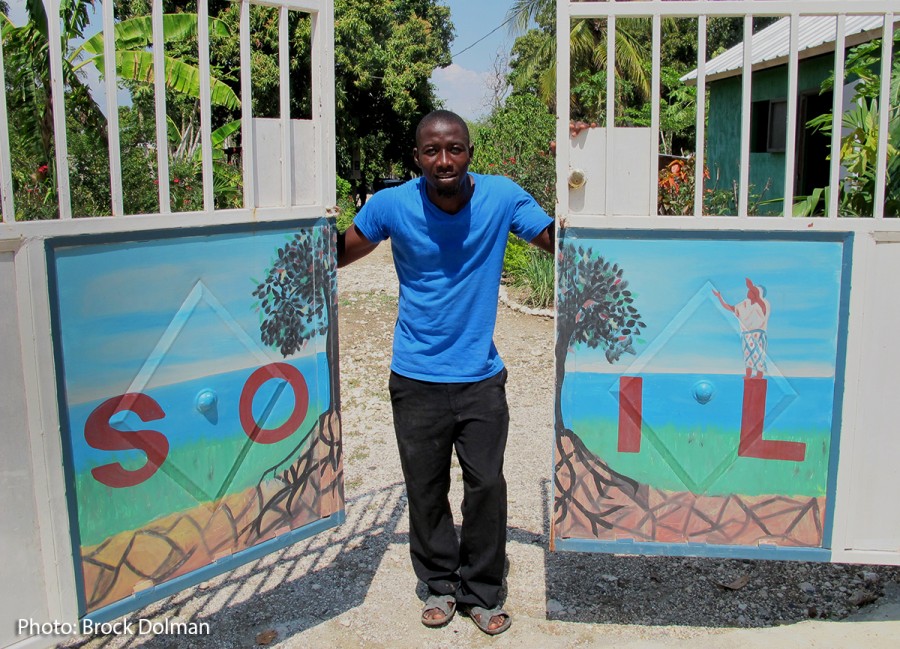Our Collaboration in Haiti
 OAEC was invited to visit to Haiti by SOIL (Sustainable Organic Integrated Livelihoods –www.oursoil.org) as an organizational exchange to help each other further current projects. SOIL’s formal mission is “SOIL promotes dignity, health, and sustainable livelihoods through the transformation of waste into resources”, specifically humanure waste into pathogen-free compost that can be used to increase soil fertility.
OAEC was invited to visit to Haiti by SOIL (Sustainable Organic Integrated Livelihoods –www.oursoil.org) as an organizational exchange to help each other further current projects. SOIL’s formal mission is “SOIL promotes dignity, health, and sustainable livelihoods through the transformation of waste into resources”, specifically humanure waste into pathogen-free compost that can be used to increase soil fertility.
OAEC will support SOIL in a permaculture design at their Cap Haitien farm site and SOIL will consult with OAEC about the best practices they have developed to collect, process, and research humanure composting systems.
More about Port-au-Prince
The city of Port-au-Prince is nestled in an undulating plain bounded by a large lake, Etang Saumatre, on the east and the Port-au-Prince Bay on the west and 6,000 foot mountains to the north and south. The city has lovely views down over the plains, out to the sea, and up to the surrounding mountains. Beautiful, bright-eyed, active people are in constant motion getting to work, selling their wares, heading to church, and working out.
From Metal to Magic
What could you make from old metal barrels? A shiny tree of life, mermaid singing, a flock of birds, or whatever your imagination can cook up if you are a metal artist at Serge Julimeau’s Workshop in Croix-des-Bouquets outside of Port-au-Prince. Don’t tell Dougo, but he might have a little garden-themed prezie coming to him from Julimeau’s workshop.
Many areas of the city have been repaired from earthquake and hurricane damage, although the work is still continuing. There are areas especially in the lowest part of the plains and out toward the port where collapsed buildings are a regular feature. One of these areas, called downtown Port-au-Prince, is bustling with small merchant activity and large storage facilities with goods from the port.
Even on a Sunday afternoon, the dusty downtown streets are packed with sellers of fruits, electronics, leather goods, live animals, music CDS, perfumes, clothing, and religious paraphernalia. Behind the merchants, building ruins are a vivid reminder of 2010 liquefaction. Some buildings are partially folded over with bus-sized cement chunks ready to calf off at unknown future moments. Some large intersections are entirely clogged with several feet of rancid debris. Buses bog down in the plastic sewage that piles up to their axels.
Earlier that morning in the neighborhood we are staying in, people painstakingly swept the rocky streets and carefully piled trash in heaps that was scooped up by city sanitation workers, so the contrast of the grimy downtown area was striking. Haitians continue to turn rubble into roofs and wastes into resources at a steady pace, but still more work remains.
Impervious Surfaces
The dry season in Port-au-Prince is coming to an end. Tonight massive cumulous clouds boiled from orange to pink in the setting sun offering promise of rain. We went to Dr. Sasha Kramer’s house (co-founder and executive director of SOIL) to dine and record an interview with her about SOIL’s work and our collaboration here in Haiti.
While sharing a tasty taco dinner, we witnessed a short downpour before walking home to Rita’s Guesthouse. On the dark, exhaust-filled streets, traffic had come to a halt and fast walkers carefully zigzagged around pulsing currents of mucky runoff. Foul water coursed in every direction over sidewalks and through streets making flip-flops an excellent shoe choice. It had rained for less than 15 minutes, but the high amount of impervious surfaces in the city turned the small rain into a serious run-off issue. What would a full-sized storm do to the functioning of the city?
















